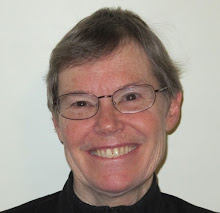My great-grandfather, Andrew Nichols, had a strong interest in genealogy. He was known to help other people with their searches for information about ancestors. When I saw his detailed genealogy of our Nichols family ancestors, I was not surprised. Taped inside the front of an old book, I found a well-worn printed copy, marked up by subsequent family members. (See photos of it, below.)
That copy lacks a date. The pages were not torn or cut from a publication, but issued separately as a reprint, it seems. I spent some time searching among old issues of the Essex Institute Historical Collections (dusty ones in boxes in my storage room, and digitized ones online), hoping to find the original on which this reprint was based.
I thank Richard Trask, Town Archivist, Danvers Archival Center, for answering my questions. He wrote,
The "Genealogy of the Nichols Family," by Andrew Nichols was originally published in volume 3 of the Historical Collections of the Essex Institute (1861) on pages 29-32.
Wow! 1861 is a significant date in Andrew's life. Later that year he would be marrying his beloved "Lizzie" (Elizabeth Perkins Stanley) of Salem and bringing her to live in Danvers, in the cottage he had designed and was in the process of building.
April 15, 1861, was the date of the foundation of the new house. Also on that date, President Lincoln called up state militias (the start of the Civil War).
Coincidently here I am on April 15, 2023, thinking about this history and sharing a bit of my great-grandfather's research.
 |
| [Click on each image to enlarge] |
Now I will share images of the context in which I found this reprint. I thank cousin Betty Nichols in Modesto, CA, for passing to me several meaningful family items that had belonged to her late husband Bill Nichols (William Stanley Nichols, II), including a copy of the Holyoke Diaries (1911).
 |
| Note that Andrew had given this copy in 1911 to his son William Stanley Nichols (my grandfather) |
 |
| An Addendum to Andrew's Genealogy of the Nichols Family. |
(103) Andrew Nichols C.E. the scribe married the 5th Sept 1861 to Elizabeth Perkins Stanley the dau. of John Stanley born in Liverpool England and his wife Elizabeth Hunt of Salem Mass, ...
Note: This Addendum page is based on a manuscript that I’ve never seen. I’m guessing that my uncle Edward Holyoke Nichols typed this during the years when he was assisting his daughter, Janet Nichols Derouin, as they sorted old letters from the Pine Knoll home (where Andrew raised his family). Edward, retired and living in Florida, transcribed many, many handwritten letters, mailing packages of them to Janet. (I have those packages and the resulting files that Janet gave to me. There are lots of letters from the 1890’s, which Janet says will be very interesting to read... if I ever get that far. I spent several years reviewing her earlier files, as I edited a draft of her book and created a separate website for The Pine Knoll Story. Her draft ends at 1880.)
P.S. Here's a relevant quote from my cousin Janet's Pine Knoll Story. She had compiled charts to show the family lineages in that story. On page 16 of her charts, I see this:
"Andrew Nichols wrote the following on the subject of ancestors."From my examination during the past 62 years I have not been able to find a single ancestor (of those not born here) who came to this country after 1700, which is a fact that very few can say that have traced as many as I have. In three cases cousins married reducing the number to be accounted for. My children cannot say it as my wife's father was born in Liverpool.














